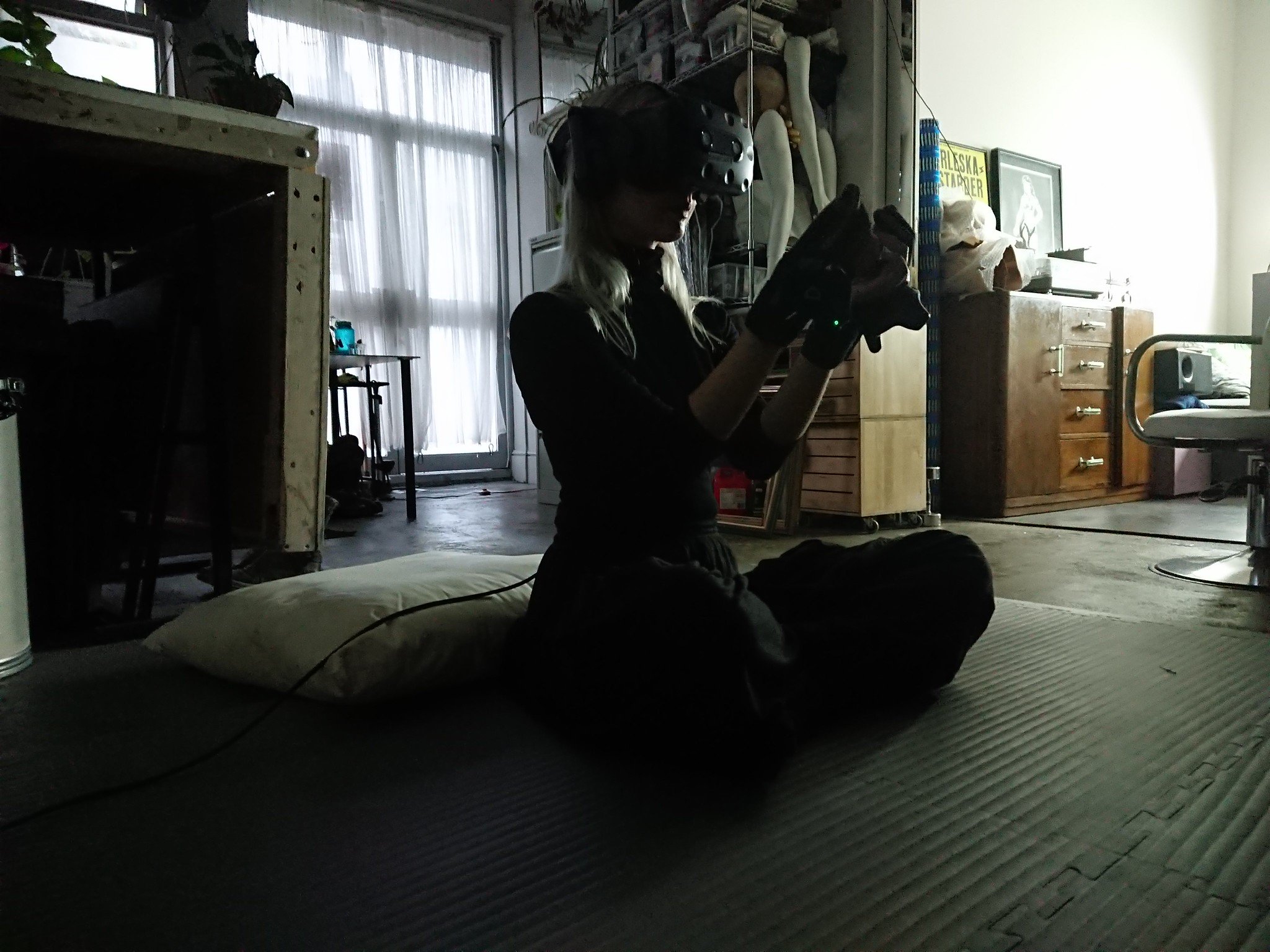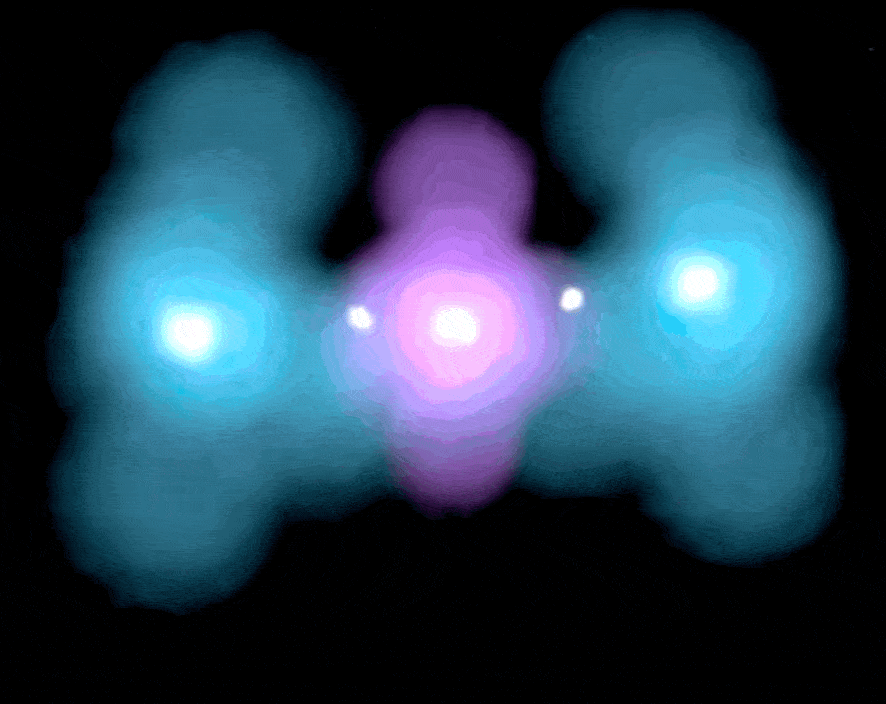
Isness-D: three participants merge their bodies to undergo ‘energetic coalescence’
ISNESS-D [ISNESS distrubuted]
Isness-D (or Isness Distributed) is an extension of Isness-C: it’s a multi-person VR experience where participants dial in from remote ‘nodes’ to meet others in a guided meditative ritual. It was developed during lockdown to address issues of alienation and loneliness in the wake of the COVID-19 pandemic.
Unlike Isness-C, where participants were co-located, Isness-D participants would log in remotely, joining one another in the same virtual space. The subsequent citizen-science study comprised of 29 individual sessions, with 109 total participants, spanning 14 nodes across two continents in which the molecular physics calculations were run on one of the three possible servers (London, Frankfurt, or Washington D.C).
Isness-distributed' (Isness-D) harnesses the unique affordances of distributed multi-person VR to blur conventional self-other boundaries. Within Isness-D, groups of participants co-habit a shared virtual space, collectively experiencing their bodies as luminous energetic essences with diffuse spatial boundaries. It enables moments of 'energetic coalescence', a new class of embodied phenomenological intersubjective experience where bodies can fluidly merge, enabling participants to have an experience of including multiple others within their self-representation.
To evaluate Isness-D, we adopted a citizen science approach, coordinating an international network of Isness-D 'nodes'. We analyzed the results using 4 different self-report scales previously applied to analyze subjective YD phenomenology (the inclusion of community in self scale, ego-dissolution inventory, communitas scale, and the MEQ30 mystical experience questionnaire). Despite the complexities associated with a distributed experiment like this, the Isness-D scores on all 4 scales were statistically indistinguishable from recently published YD studies, demonstrating that distributed VR can be used to design intersubjective STEs where people dissolve their sense of self in the connection to others.
“I could feel subtle changes in my hands as if something was passing by, something physical.”
“[I was] struck with how quickly the abstract lights grew to hold tangible meaning… as other people. It was especially poignant [during moments of coalescence] when we moved toward the centre and felt as if we might collide or enter each other’s personal space.”
The international Isness-D ‘node’ network. The circular markers are labelled with the total number of nodes in that location: 5 nodes in the San Francisco Bay Area (USA), 1 node in Tennessee (USA), 1 node in Massachusetts (USA), 6 nodes in Bristol (UK), and 1 node in London (UK). The Isness server was mounted on data centers (D) in London (UK), Frankfurt (Germany) and Washington D.C (USA)
PUBLICATIONS
Group VR experiences can produce ego attenuation and connectedness comparable to psychedelics, D. R. Glowacki, R. Roebuck Williams, O. M. Maynard, J. E. Pike, R. Freire, M. D. Wonnacott, M. Chatziapostolou, Nature Scientific Reports, vol 12, Article number: 8995 (2022), doi: 10.1038/s41598-022-12637-z
Isness: Using Multi-Person VR to Design Peak Mystical-Type Experiences Comparable to Psychedelics D. R. Glowacki, M. D. Wonnacott, R. Freire, B. R. Glowacki, E. M. Gale, J. E. Pike, T. de Haan, M. Chatziapostolou, O. Metatla, arXiv: 2002.00940, CHI ’20: Proceedings of the 2020 CHI Conference on Human Factors in Computing Systems, doi: 10.1145/3313831.3376649,









